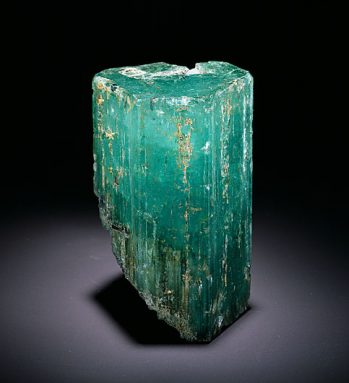Tracing a gem’s origins
Lasers identify the country — and even a mine — that a precious stone hails from
Most people know precious gems by their appearance. An emerald flashes deep green. A ruby seems to hold a red fire inside. Diamonds sparkle like a star. It’s more difficult to tell where the gem was mined, since a diamond from Australia or Arkansas may appear identical to one from the Democratic Republic of the Congo.
But they can, in fact, differ. Clues to their origin can lie beneath the surface of a gem, on the tiny level of atoms and molecules. Catherine McManus reported on a technique that uses lasers to unravel these clues and identify a stone’s homeland. McManus directs scientific research at Materialytics, in Killeen, Texas. Her company is developing the technique. And she described their technique at this year’s meeting of the Geological Society of America. It took place in Minneapolis, Minn.

Some gems, including many diamonds, come from war-torn countries. Sales of those “blood minerals” may fund violent civil wars where innocent people are injured or killed. In an effort to reduce the trade in blood minerals, the U.S. government passed legislation in July 2010. It requires companies that sell gems to determine where they came from.
To figure that out, McManus and her team focus a powerful laser on a small sample of the mineral. The technique is called laser-induced breakdown spectroscopy. Just as heat can turn ice into water or water into steam, energy from the laser changes the state of matter in the mineral. The laser changes a miniscule portion of the gemstone into plasma. This is a gaseous state of matter in which tiny particles called electrons separate from their parent atoms.
The plasma, which is superhot, produces a light pattern. (The science of analyzing this kind of light pattern is called spectroscopy.) Different elements produce different patterns. But gemstones from the same area produce similar patterns, McManus and her team report. Their company already has collected patterns from thousands of gems. These include more than 200 diamonds. They can compare the light pattern from an unknown gemstone to patterns they do know, then look for a match. The light pattern acts like a signature that points to the gem’s origin.
In a small test, the laser technique correctly identified the origins of 95 out of every 100 diamonds. For gemstones like emeralds and rubies, the technique proved successful for 98 out of every 100 stones. The scientists need to collect and analyze more samples, including those from war-torn countries, before the tool is ready for commercial use.
Barbara Dutrow is a mineralogist from Louisiana State University in Baton Rouge. She find the technique exciting. “This is a fundamentally new tool that could provide a better fingerprint of a material from a particular locality,” she told Science News.







